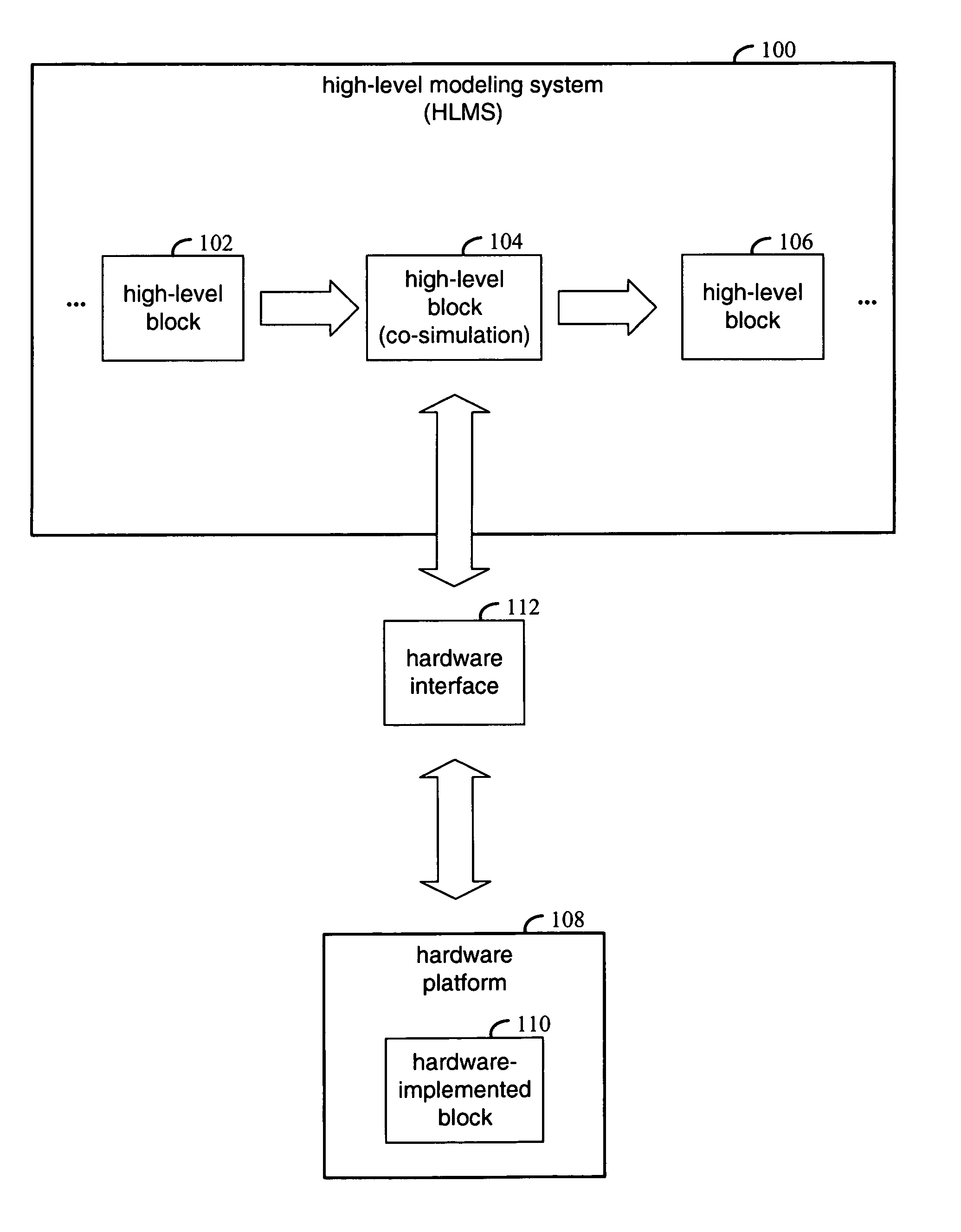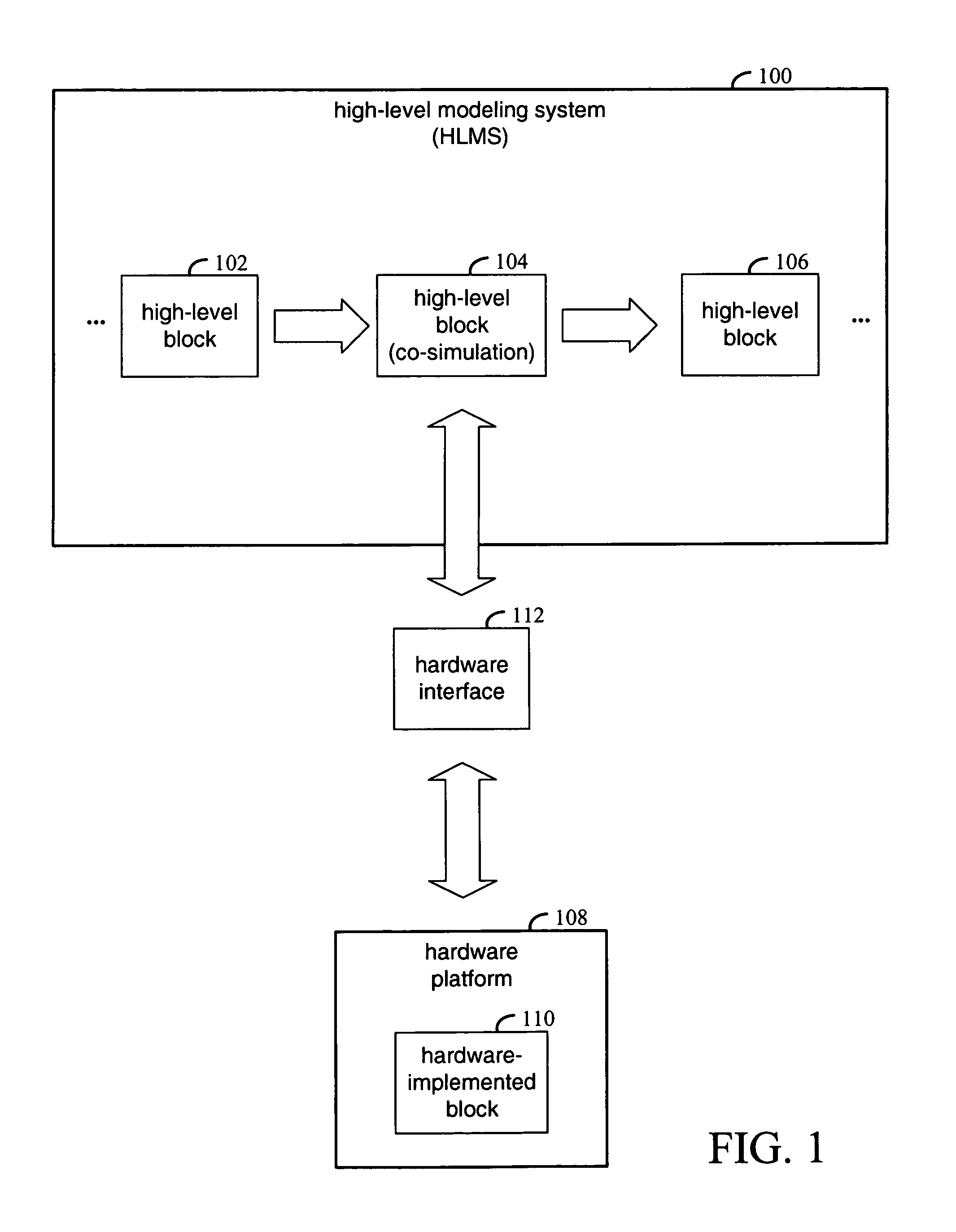Vector transfer during co-simulation
a co-simulation and vector technology, applied in the field of co-simulation, can solve the problems of high overhead, limited actual throughput achieved between software-simulated blocks and hardware-simulated blocks, and waste of physical connections between the host workstation and the fpga,
- Summary
- Abstract
- Description
- Claims
- Application Information
AI Technical Summary
Benefits of technology
Problems solved by technology
Method used
Image
Examples
Embodiment Construction
[0015]The various embodiments of the invention may be used to accelerate a simulation that involves co-simulating a hardware-implemented block while other high-level blocks are simulated in an HLMS. The simulation is accelerated by way of burst transfers of data between the HLMS and the hardware-implemented block. Burst transfer involves the transfer of vector data in a single HLMS operation. It will be appreciated that vector data is a group of two or more data values, whereas scalar data is a single data value. A vector of data or data values may also be referred to as a frame of data.
[0016]In one embodiment, scalar values may be accumulated (buffered) in the HLMS into a frame of data that is transferred to the hardware-implemented block. The HLMS may also de-buffer data received from the hardware-implemented block and provide scalar values to a downstream block in the HLMS.
[0017]The HLMS determines the sizes of buffers used to transfer frames of data from information in the desig...
PUM
 Login to View More
Login to View More Abstract
Description
Claims
Application Information
 Login to View More
Login to View More - R&D
- Intellectual Property
- Life Sciences
- Materials
- Tech Scout
- Unparalleled Data Quality
- Higher Quality Content
- 60% Fewer Hallucinations
Browse by: Latest US Patents, China's latest patents, Technical Efficacy Thesaurus, Application Domain, Technology Topic, Popular Technical Reports.
© 2025 PatSnap. All rights reserved.Legal|Privacy policy|Modern Slavery Act Transparency Statement|Sitemap|About US| Contact US: help@patsnap.com



